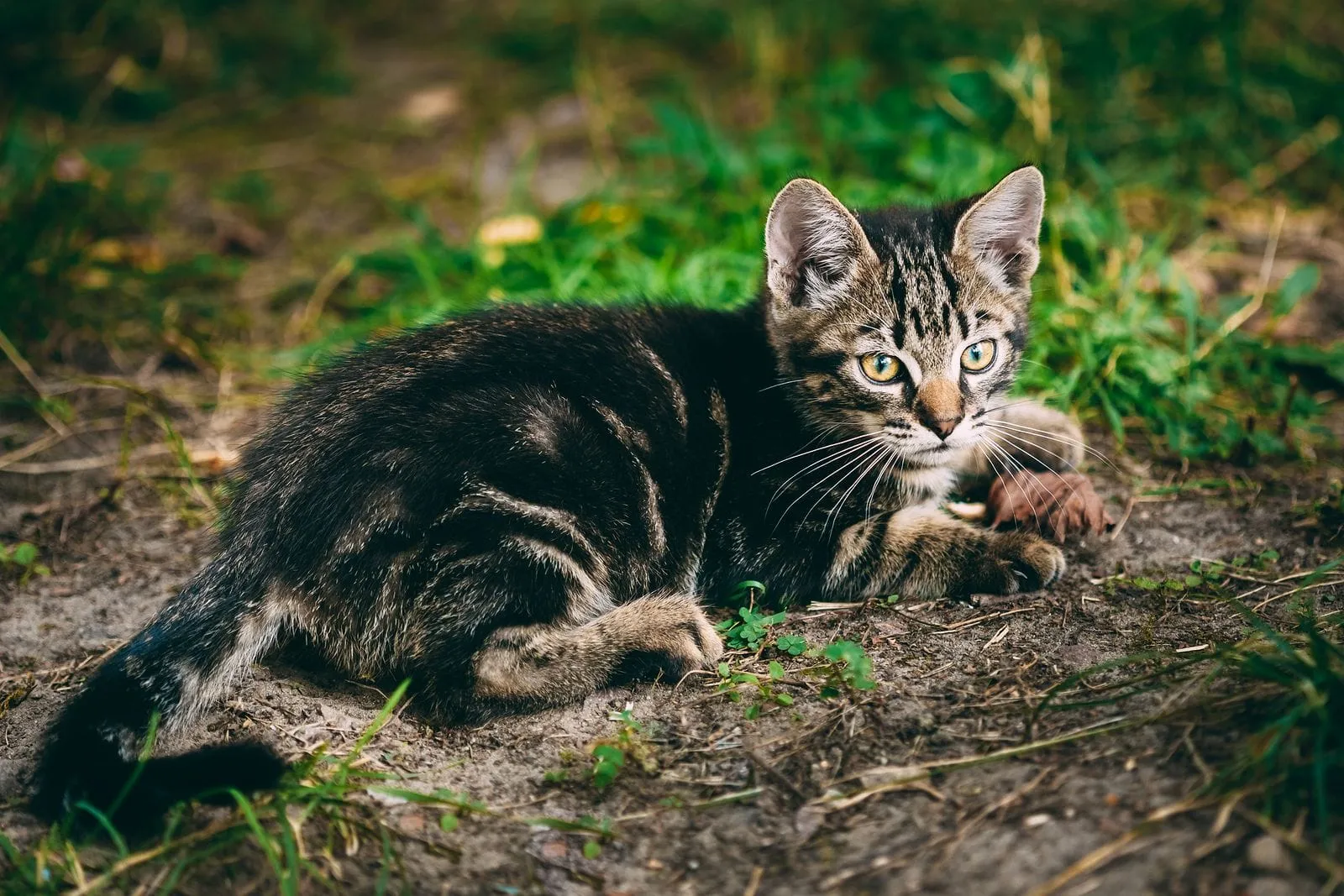Kittens and the litter box
Kittens generally take to the litter box readily, especially if the substrate in the box most closely resembles sand: fine grit, heavy to the paw and a pleasure to dig in. If your kitten is not using the box, first look at what's in the box, then make sure your kitten can get into the box easily and that the box's location is easily accessible.
Of course, if your kitten has diarrhea, that's another matter, please call to discuss.
Adult Cats and the Litter Box
When a cat isn't using the litter box appropriately, several possible issues need to be explored. First, we must make sure a medical condition isn't the primary cause or a contributing factor. This is done mainly by tests on the urine, though physical examination findings are also important and blood tests sometimes are needed, especially with the older or senior cat to uncover important issues such as diabetes or kidney trouble. Non-medical issues that can be the primary cause or contributing factor in a cat not urinating and defecating in the litter box include:
Age at desexing:
If a cat has not been spayed or neutered prior to puberty, they will begin to communicate their sexuality to other cats by leaving chemical scents, often by "spraying". Spraying is different from normal urinating because both males and females back up to an object and spray urine straight back, rather than assuming the urinating stance. Spraying occurs outside the litter box, usually in locations where the cat hope other cats will find the scent and send a return "pee-mail". It is important to spay or neuter your cat before this behavior is established. Once established, it can be difficult to completely eliminate spraying in some individuals. We recommend spay/neuter between 4 and 6 months of age and before sexual behaviors are displayed.
Stress between cats in a multiple cat household:
If your want to have more than one cat, it is by far easiest to keep sibling or other family members together. Cats are very family oriented, and would much prefer to be housed with family members. If that isn't possible, then introduce cats that are less than about 2 years of age to eachers as housemates to increase you chance of peace and harmony. If it's too late for all of that and your cats don't happen to all be seamlessly diplomatic, you may be having litter box issues.
Back to chemical communication: It's dangerous for cats to fight, and they have multiple systems for avoiding fighting. One is a complex system of chemical communication (read ther cat-topic entitled pheromones for more clarification)...something like "okay, so we don't like eachother, but have been forced to live under the same roof, so: "this is my area, that can be yours if you insist, we can work this all out peacefully." The more submissive cat, unfortunately for him, may do more of the communication. The dismayed of cat owner only sees":spray,spray-spray,spray-spray-spray." The cat is usually scolded. The bewildered cat is now "getting it" from both sides, and the more vehement his efforts to work things out with the owner and the other cat or cats, the more spraying goes on. As his stress levels rise, he may then develop a true and painful condition of the bladder which may require specific treatment.
Not nearly as commonly, a cat may defecate outside the litter box as a territorial statement. This is called middling.
So what do we do? A combination of pheromones diffusers, pheromone sprays, enzymatic removal of the "pee-mail" sites, tests on the urine to see if he or she has developed actual trouble with the bladder and specific treament for such. Then, environmentally, we then talk about resource distribution. All of the resources that a cat needs should be distributed in such a way as to reduce stress to the cats sharing them. With many cats in a household, we need to look at true or formed family units within the group who can share resources, and separate family groups or individuals who must have separate resources. Resources includes: feeding areas, litter boxes, resting places, scratching posts,sleeping places and toys.
Sometimes a house call is warranted to help sort out these issues.
Number of litter boxes:
Generally the more cats you have, the more boxes you need. Someone once said "take the number of cats you have and add one" to get the correct number of boxes. There are other factors, such as how well the cats get along, the number of social groups, and size of the house, but this is a good rule of thumb as a starting point. Bottom line: you have 5 cats and one box, you have probably found the problem.
If the boxes are close together: it's the same as one box. It's best if the boxes are located in such a way that they are not close to each other and the cats cannot see each other from the boxes.
Escape route: A cat may not use a box if she feels trapped there. If another cat attacks her at the box, she needs to have a separate entrance and exit route so she know she will be able to get away and not be trapped and attacked at the box.
Substrate, or "what's in the box": Cats usually prefer a substate that feels most like the sand or dirt they would find in nature. If your cat stopped using th ebox within a week of changing litter substrate, this could be the problem. Some cats have a preference for the feel of the litter as well as the scent. You may need to get a few different types of litter, and possibly a litter attractant to see if this is a factor.
Size of box:
The rule of thumb here is that the box should be about one anda half times the length of the cat. Again, a rule of thumb, you want your cat to be able to dig in a few different places to figure out which is the best spot for the moment, and to be able to comfortably posture without being cramped for space.
Locations of the box: Easily and always accessible.
In a large multi-story house this may mean more than one box for one cat. There must not be any doors which can be closed between your cat and the box. It should be in a location that she doesn't mind visiting. If she is more private, it should be more out of the way, but if she is more social, she may prefer the box to be in a place frequented by those she cares for.
Wall height of the box:
Not usually a problem except with the small kitten who may need a shorter box and especially the senior cat with arthritis. He may be able to get tin the box, but if entering the box is associated with pain on stepping over the walls, he may start to develop an aversion and go outside the box, though possibly quite near the box. A shorter wall height or medical care for the arthritis can make a big difference. Also, the geriatric cat with poor eyesight may need a nightlight to find the box, and may need the box placed close to resting and sleeping locations.
Sounds at the box: Is it in the laundry room? Have you seen your cat's response when the machine hits the spin cycle when she is concentrating on doing her business in the box? It only take one time to cause her to associate the litter box with that startled feeling.
Hurdles, obstructions, stressors and yippie dogs: Is there something or someone stressful or uncomfortable she must get past on the way to the box? How much as we asking of her here, from her perspective, to get to that box at the moment she feels the need. If the stress causes her to develop a painful bladder condition such that she needs to go to the box more often and with greater urgency, might she just give up and go where she's at rather than "run the gauntlet"? Is there some way the box can be where she is already, or at least on this side of the stressor? Can the dogs be put somewhere else when the people aren't there to supervise their behavior?



